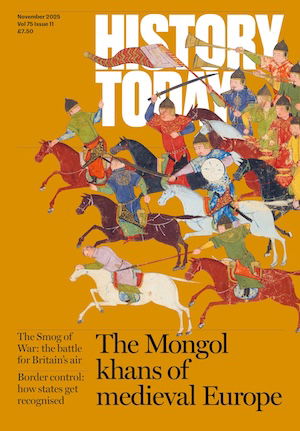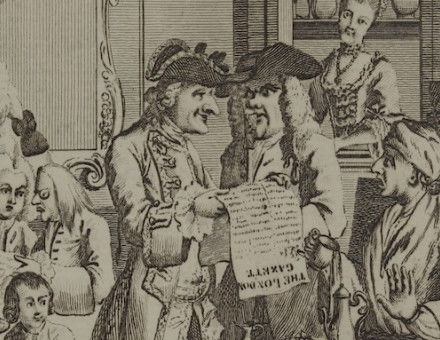Against the Grain
Sweet it may be, but sugar's story is a bitter one, embracing slavery, decay and obesity.
 Sugar is not a sweet subject, argues James Walvin. His new book offers a convincing, deep history of this (in)famous product. It is also full of fascinating facts, such as the first English encounter with sugar, during the Crusades, where it was called ‘candy’, the contemporary name for Crete, where it was grown. He explains how a product that was ‘once the prized monopoly of kings and princes’ filtered down to the common people and became an essential ingredient of the modern world.
Sugar is not a sweet subject, argues James Walvin. His new book offers a convincing, deep history of this (in)famous product. It is also full of fascinating facts, such as the first English encounter with sugar, during the Crusades, where it was called ‘candy’, the contemporary name for Crete, where it was grown. He explains how a product that was ‘once the prized monopoly of kings and princes’ filtered down to the common people and became an essential ingredient of the modern world.
Walvin’s work generally concentrates on slavery in the Americas and he reminds us forcefully that sugar continued to be produced by unfree labour, transported across oceans for that purpose, long after America’s slaves had been emancipated: from indentured Indian labourers in Fiji to Japanese workers in Hawaii and South Sea Islanders in Australia.
This is not simply the tale of those who toiled to produce sugar. The commodity’s effect on the consumer’s body is a theme throughout. The teeth are a good example. The victims of Vesuvius, with no sugar in their diet, had excellent teeth; Louis XIV had lost all of his to decay before he was 40. Yet the decay sugar brought was not just physical, it was also moral. Demand for sugar drove the Atlantic slave trade and the ruthless pursuit of profit that shaped the emergence of modern capitalism. The skilful interweaving of the individual’s body and the wider socioeconomic landscape is a striking feature of this text; understanding the high levels of modern obesity demands an awareness of how marketing and retail practices shape our (apparent) dietary choices.
This study could not be more timely. Walvin aims to review how people ‘have come to think of sugar very differently in the early 21st century’. Has ‘the tide turned’, as governments contemplate ‘sugar taxes’ and producers, such as Coca-Cola, boast that their products are ‘sugar-free’?
This is something more than just a scholarly text. Walvin draws upon his childhood experiences to inform his analysis and explain how his own views have formed. This gives the book an engagingly personal feel. Indeed, it is rather forceful in places and some readers may feel Walvin blames too many of the world’s woes on sugar. Is it wholly fair, for example, to blame young women for their fondness of ready meals, as they balance work and domestic responsibilities? Similarly, what of the cultural pressures endured by today’s young women – and increasingly young men – especially in terms of their physical appearances?
These ruminations do not, however, dilute Walvin’s message; he reminds us that sugar is an extraordinary product with an extraordinary history. Its production and consumption always have been powerful engines of social inequality. Walvin has done us a service by reminding us of this fact.
Sugar: The World Corrupted from Slavery to Obesity
James Walvin
Robinson 352pp £18.99
Laura Sandy is Lecturer in the History of Slavery at the University of Liverpool.




